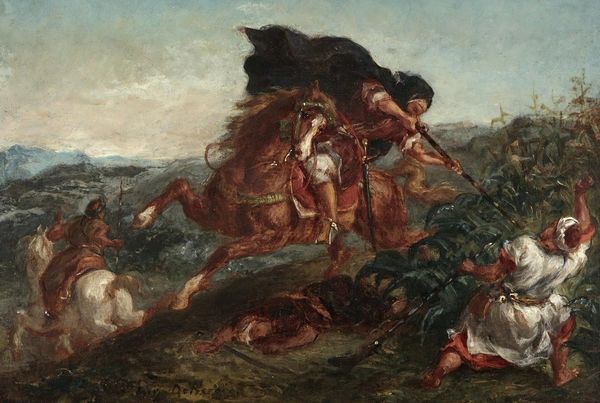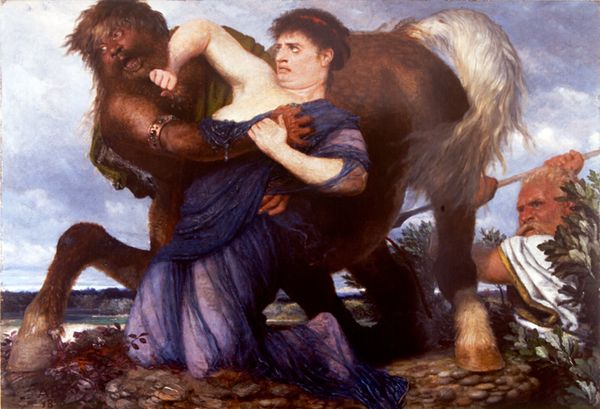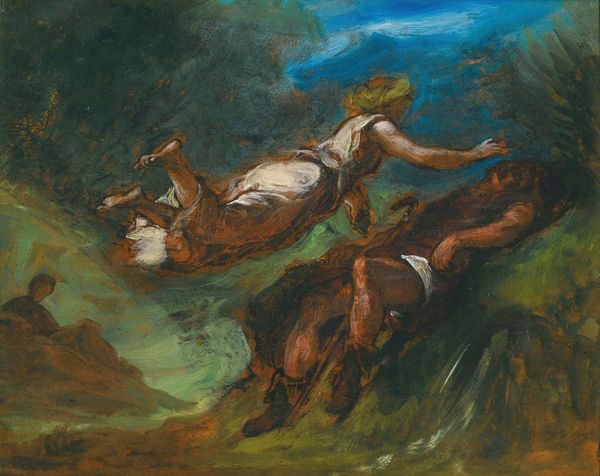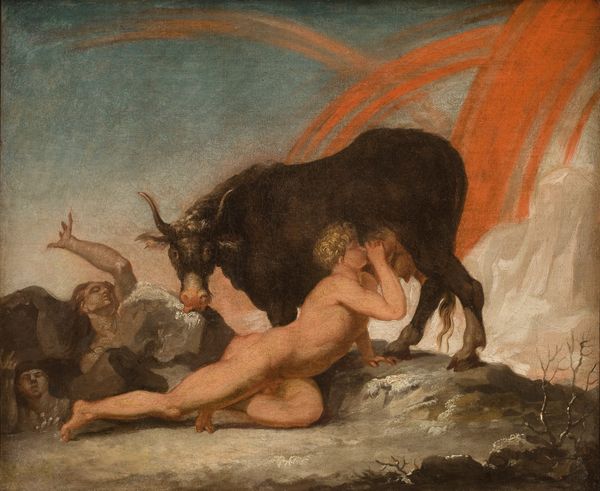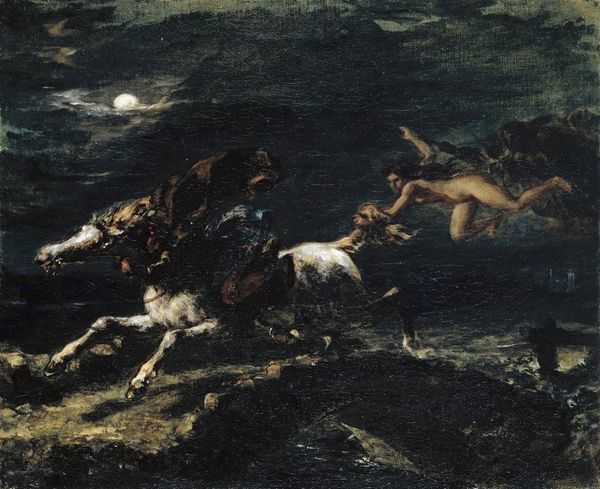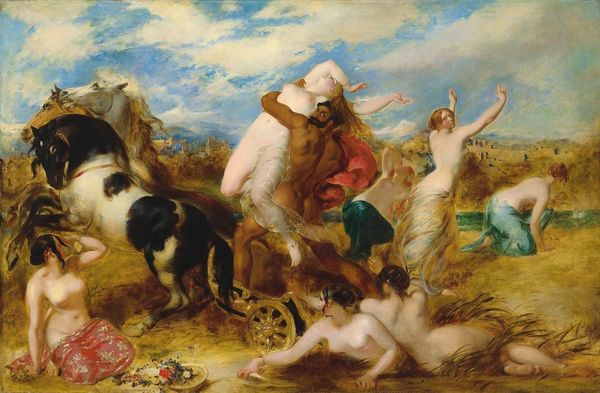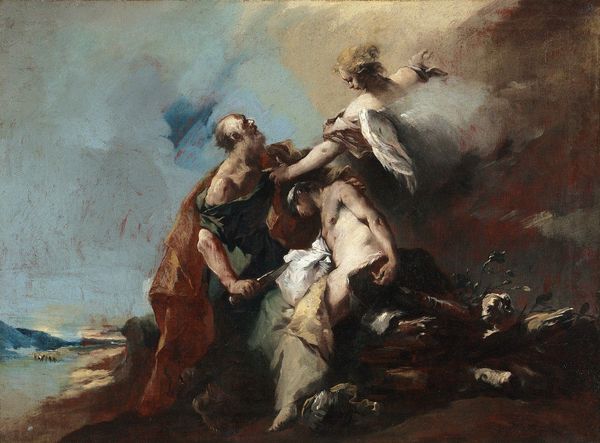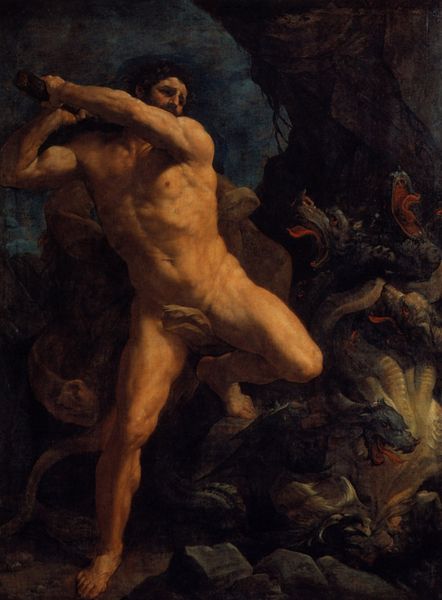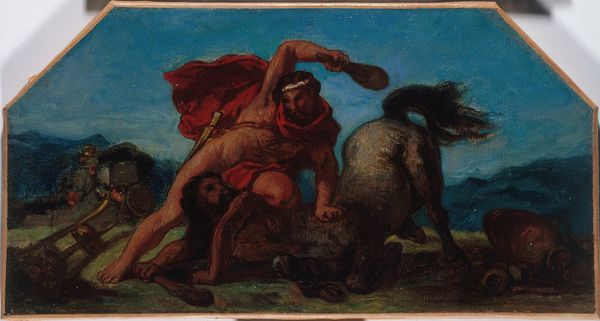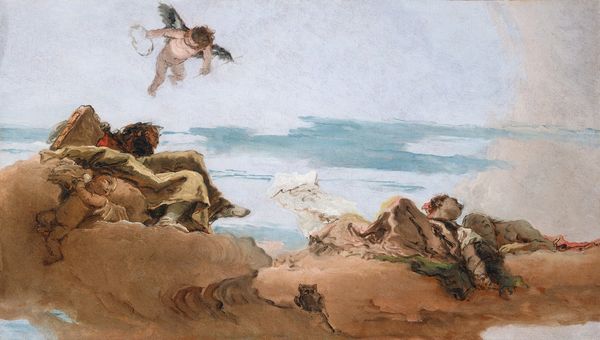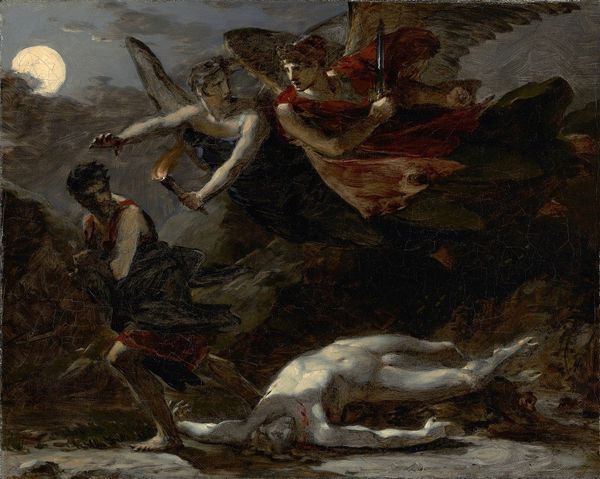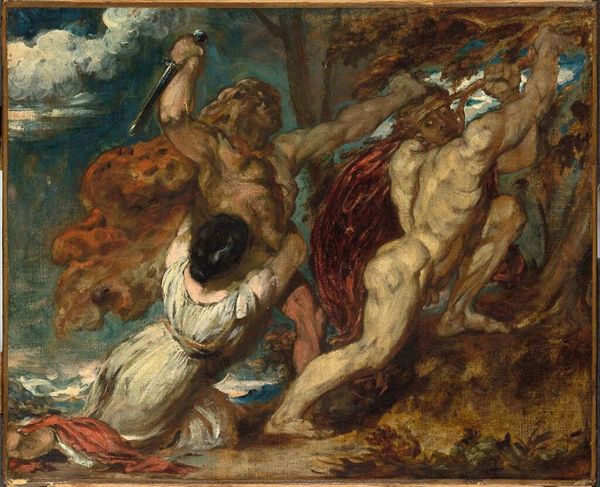
Copyright: Public Domain: Artvee
Editor: We’re looking at Arnold Böcklin's "Battle of the Centaur" from 1872-1873, an oil painting depicting a chaotic clash of centaurs. The scene feels incredibly dynamic and violent, a swirl of limbs and aggression. What do you see in this piece, especially considering its historical context? Curator: I see a representation steeped in the socio-political turmoil of its time. Böcklin's choice of oil, a traditional medium often associated with established power structures, is itself a statement. But he uses it to depict… what exactly? Raw, almost barbaric energy. Think about the rise of nationalism and the anxieties surrounding modernization. The centaurs, beings caught between civilization and savagery, become a powerful metaphor for the era's conflicted identity. How does the painting's materiality—the texture of the paint, the way Böcklin builds up the surface—contribute to this reading, do you think? Editor: It's interesting how the thick impasto and visible brushstrokes add to the raw, almost unfinished quality, which you're right, emphasizes the "savage" side. Was Böcklin deliberately subverting the expectations of high art by presenting this messy, violent scene? Curator: Precisely. And consider the context: The rise of industrial capitalism meant that art was becoming more commodified. Böcklin, by highlighting the physical act of painting, the labor involved, reminds us of the human element often lost in the drive for efficiency and mass production. The rugged landscape itself underscores this connection to the earth, to a pre-industrial state. What about the viewer's consumption of the art itself, within this industrial complex? Does that influence our own judgement? Editor: I never thought about the artist deliberately challenging our expectations as viewers. It's like he's questioning what art's role even is. Curator: Exactly. By drawing attention to the materiality and the means of production, Böcklin provokes us to question the social and economic forces that shape not only the artwork but our entire world. Editor: So, it's more than just a mythological scene; it's a commentary on the social and economic climate of the time. Curator: Precisely. Böcklin challenges the viewer to see the threads connecting mythology, materiality, and the messy realities of a changing world. Editor: Well, I’ll certainly be thinking about the “means of production” a lot more when I see art from this period onward. Curator: Agreed, considering the context changes everything.
Comments
No comments
Be the first to comment and join the conversation on the ultimate creative platform.
